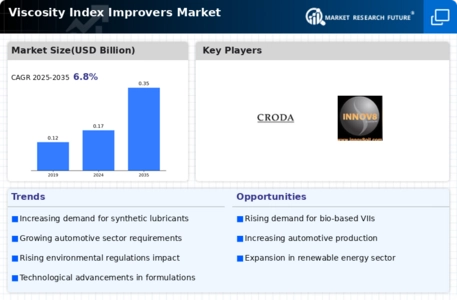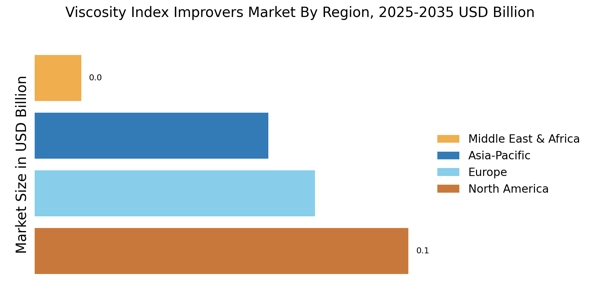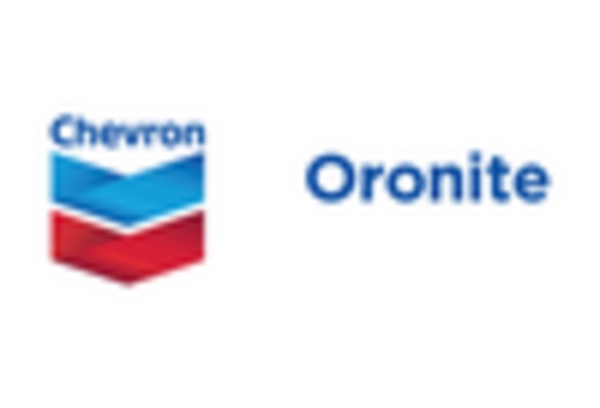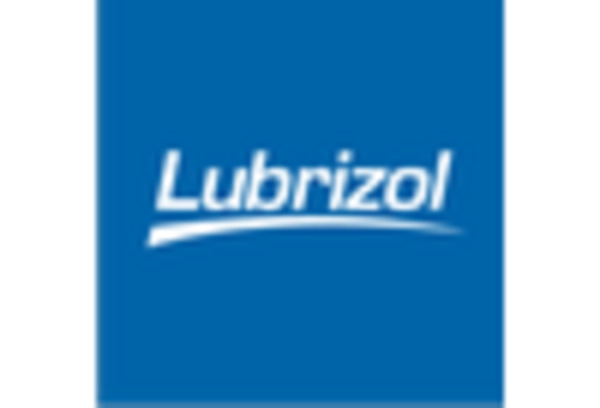Growth in Automotive Sector
The Viscosity Index Improvers Market is significantly influenced by the growth of the automotive sector, which is projected to expand at a compound annual growth rate of approximately 4% over the next few years. This growth is largely attributed to the rising production of vehicles, particularly in emerging markets where automotive manufacturing is on the rise. As vehicles become more sophisticated, the demand for advanced lubricants that incorporate viscosity index improvers is likely to increase. These improvers are essential for ensuring that engine oils maintain their viscosity under varying operational conditions, thereby enhancing engine performance and longevity. The automotive industry's shift towards electric vehicles also presents new opportunities for viscosity index improvers, as these vehicles require specialized lubricants to optimize efficiency.
Rising Demand for Energy Efficiency
The Viscosity Index Improvers Market is significantly impacted by the rising demand for energy efficiency across various sectors. As industries strive to reduce operational costs and enhance productivity, the need for lubricants that minimize energy consumption is becoming paramount. Viscosity index improvers play a crucial role in this context, as they help maintain optimal viscosity levels, thereby reducing friction and energy loss in machinery and engines. The global push for energy-efficient solutions is reflected in the increasing investments in research and development aimed at creating advanced viscosity index improvers. This trend is expected to drive market growth, with estimates suggesting a potential increase in demand by 6% over the next five years, as industries prioritize sustainability and efficiency.
Increasing Demand for High-Performance Lubricants
The Viscosity Index Improvers Market is experiencing a notable surge in demand for high-performance lubricants, driven by the automotive and industrial sectors. As machinery and engines operate under more extreme conditions, the need for lubricants that maintain optimal viscosity across varying temperatures becomes critical. This trend is reflected in the projected growth of the lubricant market, which is expected to reach USD 150 billion by 2026. Consequently, viscosity index improvers play a pivotal role in enhancing the performance of these lubricants, ensuring they meet the stringent requirements of modern applications. The increasing focus on energy efficiency and sustainability further propels this demand, as consumers and manufacturers alike seek products that not only perform well but also contribute to reduced environmental impact.
Regulatory Compliance and Environmental Standards
The Viscosity Index Improvers Market is increasingly shaped by stringent regulatory compliance and environmental standards. Governments worldwide are implementing regulations aimed at reducing emissions and promoting the use of environmentally friendly products. This has led to a growing demand for viscosity index improvers that are not only effective but also compliant with these regulations. The market is adapting to these changes by developing bio-based and biodegradable viscosity index improvers, which are gaining traction among manufacturers. As a result, the industry is expected to see a shift towards more sustainable practices, with a projected increase in the market share of eco-friendly products. This trend not only aligns with regulatory requirements but also meets the evolving preferences of consumers who are becoming more environmentally conscious.
Technological Innovations in Viscosity Index Improvers
The Viscosity Index Improvers Market is witnessing a wave of technological innovations that are enhancing the performance and efficiency of these additives. Recent advancements in polymer chemistry have led to the development of new formulations that offer superior viscosity stability and lower volatility. This is particularly relevant as industries seek to improve the performance of lubricants under extreme conditions. The market for viscosity index improvers is projected to grow at a rate of 5% annually, driven by these innovations. Furthermore, the integration of nanotechnology in the formulation of viscosity index improvers is expected to revolutionize the industry, providing products that not only improve viscosity but also offer additional benefits such as reduced friction and wear.


















Leave a Comment